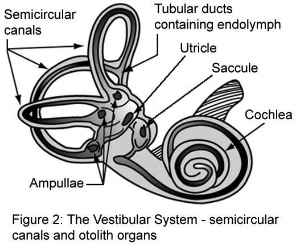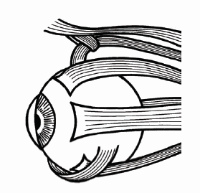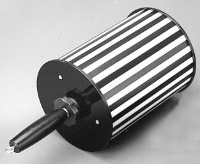|
What is Nystagmus?
Nystagmus may be described as a periodic, rhythmic oscillation of the eyes. It is involuntary, rapid (sometimes more so in one direction than another), and repetitive. There are many ways to classify it, depending on direction, cause, symmetry, and other features. It may be classified as: Pathological can be further classified as: If it occurs spontaneously in primary gaze (when you are looking straight ahead), then it is classified according to the direction of the Nystagmus: If this occurs only in an eccentric eye position (when you are not looking straight ahead), then it is called Gaze-Evoked Nand Dysconjugate involves both eyes having symmetrical eye movements but in opposite directions. What is Congenital Nystagmus?
It is usually mild and typically does not change in severity. If you are affected, you may not be aware of the eye movements even though a careful observer may notice. If the eye movements are of a large degree, then your vision may be decreased. Less commonly, Congenital type occurs as a result of congenital diseases of the eye that cause poor vision. If you have a child with this, then you should have him or her examined by an eye care provider to check for eye disease. Certain drugs may help in managing this. Of course, your eye care provider can help improve your visual function by prescribing contact lenses, recommending surgery, or administering low vision rehabilitation. What is Physiological Nystagmus?
Physiological is part of the Vestibulo-Ocular Reflex (VOR). VOR is a reflex important in stabilizing vision during head movement. Basically, when the head moves to the right, the eyes move to the left, and vice versa. The reflex thus preserves the image viewed during head movement on the center of the visual field. Physiological can have any of various possible causes which can include: Optokinetic is a reflexive eye movement which is a type of Physiological Nystagmus. OKN can be induced by presenting a moving pattern. One such pattern that is used clinically to check vision in young children and malingerers is an OKN drum. See the photo:
The neural pathways that mediate OKN are complex and extend from the Retina to the Occipital Lobe and eventually to the Ocular Motor neurons. If there is neural damage anywhere along the path, the OKN response is affected. What is Pathological Nystagmus?
Pathological occurs when the eyes drift slowly from their intended position (whether the position is looking straight ahead or to the side) as a result of an abnormality of one of the slow eye movement controlling systems or the neuro-regulatory “gaze-holding” system controlling eccentric gaze. In most cases, the slow eye drift is corrected by a rapid eye movement, which is an automatic phenomenon of a conscious brain, in order to bring the eye back to its intended position. Pathological is most often the result of damage to one or more components of the vestibular system, including the semicircular canals, otolith organs, and the vestibulocerebellum. Basically, the part of the inner ear that senses movement and position helps control eye movements 
The eyes are an important part of the vestibular system. About 20% of visual neurons respond to vestibular stimulation, as when you are spinning, shaking your head, or rocking. The vestibular system is a great coordinator in your body by gathering information from the vestibular organs in the inner ear, the eyes, muscles and joints, gravity receptors on the skin, and many other sources in order to adjust your heart rate, blood pressure, muscle tone, limb position, immune responses, and balance. What causes Acquired Nystagmus?
Most common cause is probably toxic, such as the use of certain drugs or medications, which can harm the labyrinth of the inner ear: Pathological Nystagmus more commonly involves both eyes and is conjugate, which means both eyes move in the same direction. The eye oscillations may be of approximately equal amplitude and velocity (Pendular Nystagmus ) or, more commonly, the oscillations may have a slow initiating phase and a fast corrective phase (Jerk). The direction of a Jerk is defined by the direction of the fast corrective phase. When Jerk Nystagmus occurs spontaneously when you look straight ahead, then it is classified according to the direction of the eye oscillations; that is, Horizontal, Vertical, Rotary, or Mixed. Here is an example. Suppose your eyes rhythmically oscillate, slowly drift to the left and then jerk back quickly to the right, then your Jerk Nystagmus would be classified as a Right Horizontal Jerk. Vertical can be sub-classified, according to what direction the fast corrective phase is moving: If the direction is upward, then it is referred to as Upbeat. If the direction is downward, then it is referred to as Downbeat. Downbeat Nystagmus is a common clinical sign in patients with disease affecting the vestibular cerebellum. Rotary (Torsional) refers to a rotary movement of the globe. Most resulting from abnormality in the vestibular system has a rotary component superimposed on a Horizontal or Vertical Nystagmus.

Basilar Migraine Nystagmus can be an aura symptom of an uncommon type of migraine called Basilar Artery Migrane. Auras are symptoms that precede the actual headache for many migraine patients. The head pain is usually located at the back of the head and can be associated with nausea and vomiting, sensitivity to light, sound, or smell. It may also worsen with mild activity. The important thing is that stroke or seizure be ruled out as the cause. If you experience a migraine like this with Nystagmus, proceed to the hospital for initial evaluation. The key with to managing this is to classify it, find any eye disease associated with it, improve visual function, and find any underlying neurological disease that may be causing the oscillations. |





 If you fix your eyes on a stripe of the rotating drum, your eyes will fixate on a new stripe as the drum spins. The eyes tend to track the pattern, but snap back regularly.
If you fix your eyes on a stripe of the rotating drum, your eyes will fixate on a new stripe as the drum spins. The eyes tend to track the pattern, but snap back regularly.